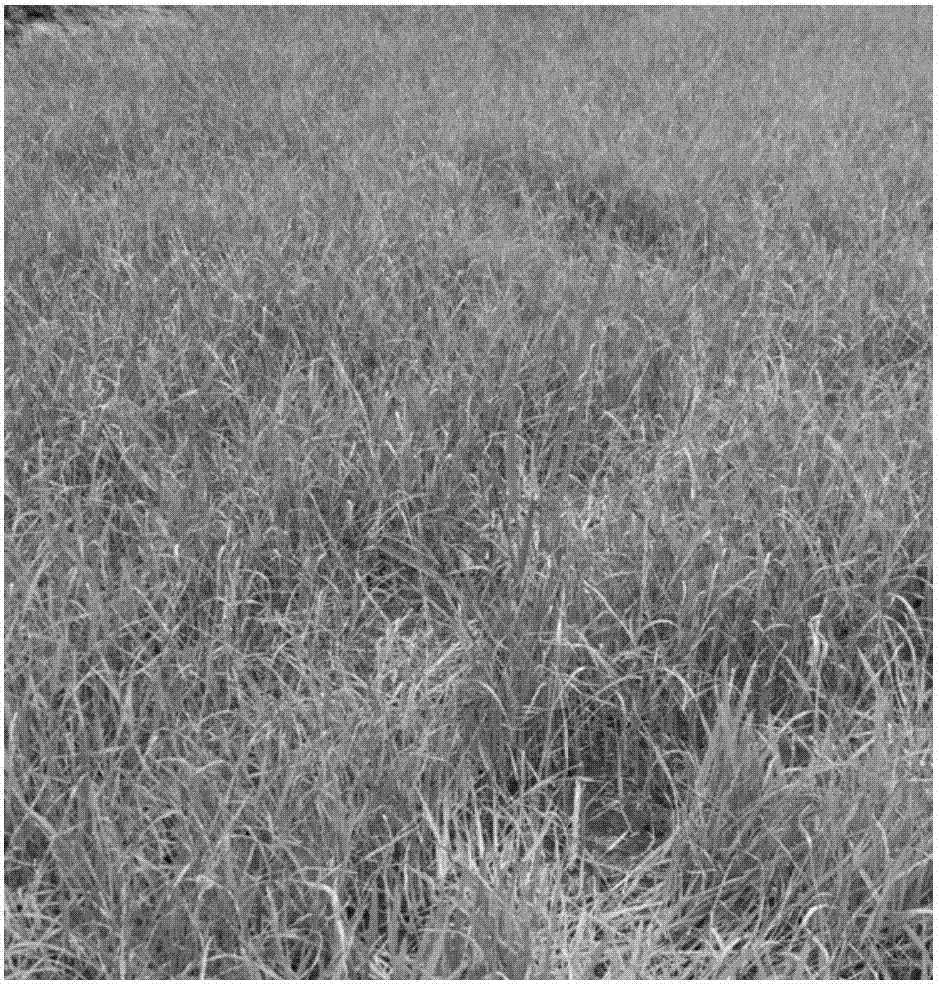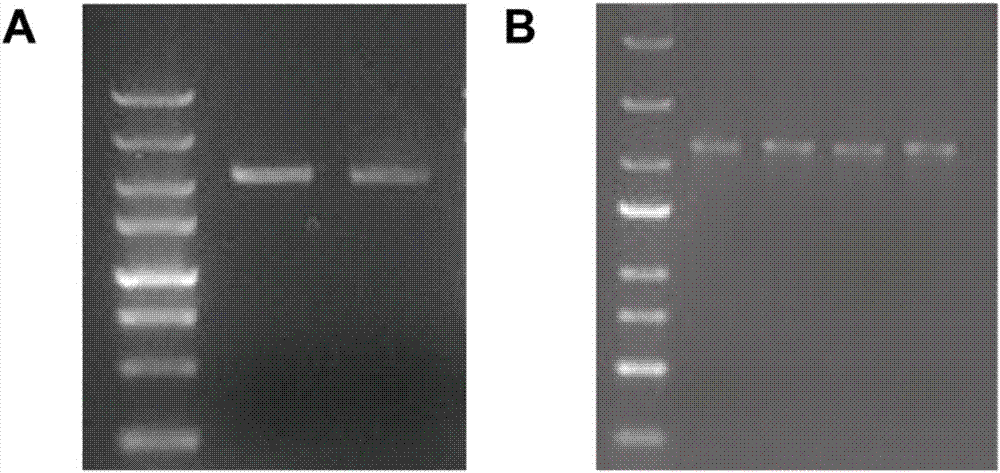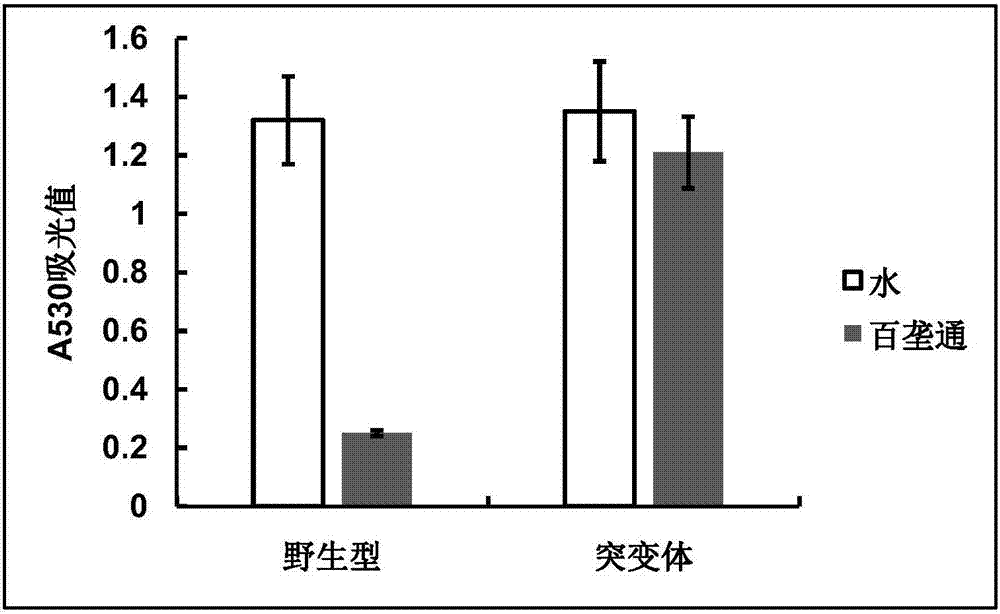Rice ALS (acetolactate synthetase) mutant-type protein enabling plants to have herbicide resistance and application thereof
A herbicide and mutant technology, applied in the field of plant protein and plant herbicide resistance, can solve the problems of undetermined mechanism of herbicide action and difficulty in predicting the herbicide resistance of ALS protein in advance
- Summary
- Abstract
- Description
- Claims
- Application Information
AI Technical Summary
Problems solved by technology
Method used
Image
Examples
Embodiment 1
[0067] Example 1: Obtaining wild-type sequences of rice Hefei male sterile line, Jiahua No. 1, and R89
[0068] According to the Nipponbare ALS gene (NCBI: XM_015770973) in NCBI, primers were designed for amplification, and TakaraPrimerSTAR Max DNA Polymerase (purchased from Takara Company) was used to amplify the ALS genes of rice Hefei male sterile line, Jiahua 1, and R89 wild type. Its reaction system is as follows:
[0069] 2×PrimerSTAR Max Premix 10.0μl
[0070] 10μM forward primer 1.0μl
[0071] 10μM reverse primer 1.0μl
[0072] 20-30ng / μL rice genomic DNA 1.0μl
[0073] Add sterile water to a total volume of 20 μl
[0074] The PCR amplification reaction program adopts a two-step method, annealing and extension are combined together, and 68 degrees are used.
[0075] The program is as follows: pre-denaturation: 98°C for 3min; 35 cycles: denaturation at 98°C for 10sec; extension at 68°C for 2min; incubation: 72°C for 10min.
[0076] Take 2 μ l of the PCR product and ...
Embodiment 2
[0083] Example 2: The process of obtaining rice mutants resistant to imidazolinone herbicides (Bailongtong)
[0084]1. Indica conventional rice seed Hefei CMS (Hua K01S, provided by Anhui Huakai Agricultural Technology Co., Ltd.) (this is M0, soaked in water for 2 hours) 150kg is divided into 6 times with 0.5-1.0% (w / w) Soak in ethyl methanesulfonate (EMS) at room temperature for 6-9 hours, shake the seeds every 1 hour during this period; discard the EMS solution, soak the seeds 5 times in tap water, 5 minutes each time, then rinse the seeds with tap water overnight, the next day Carry out field sowing, and carry out routine fertilizer and water management (this is M1). After the plants are mature, the seeds are mixed, dried, and stored for the winter. Sow in the field the following year. When rice (this is M2) seedlings grow to the 3-4 leaf stage, spray 3.3mL Bailongtong / L water ("Bailongtong" is a water-based imidazolinone herbicide produced by BASF, Germany, The recommen...
Embodiment 3
[0086] Example 3: Analysis of mutation sites in rice mutants resistant to imidazolinone herbicides
[0087] The herbicide-resistant mutant rice plants obtained in the above-mentioned Example 2 were selected to select the leaves of the mutant plants, and the genomic DNA was extracted, and sent to Nanjing Yidao Biotechnology Co., Ltd. for genome sequencing. Comparing the sequencing results with the wild-type ALS gene of the Hefei male sterile line, it was found that the herbicide-resistant rice mutant had 2 mutations in the ALS gene, and the 512th and 1050th bases were mutated, respectively changing from C to A , T into A, resulting in the 171st and 350th positions of the corresponding encoded amino acid sequence changing from proline to histidine, and asparagine to glutamic acid, that is, the nucleus of the ALS gene of the herbicide-resistant mutant The nucleotide sequence is shown in SEQ ID NO.1, and the amino acid sequence of the encoded ALS protein is shown in SEQ ID NO.2. ...
PUM
| Property | Measurement | Unit |
|---|---|---|
| absorbance | aaaaa | aaaaa |
Abstract
Description
Claims
Application Information
 Login to View More
Login to View More - R&D
- Intellectual Property
- Life Sciences
- Materials
- Tech Scout
- Unparalleled Data Quality
- Higher Quality Content
- 60% Fewer Hallucinations
Browse by: Latest US Patents, China's latest patents, Technical Efficacy Thesaurus, Application Domain, Technology Topic, Popular Technical Reports.
© 2025 PatSnap. All rights reserved.Legal|Privacy policy|Modern Slavery Act Transparency Statement|Sitemap|About US| Contact US: help@patsnap.com



